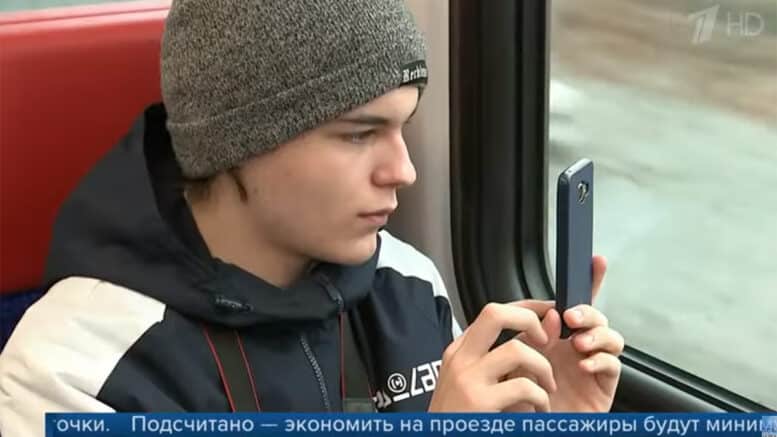Moscow’s public transportation system continues to grow and develop at an incredible pace. New “above ground” metro lines are now being developed, which include a second circle line around the city and new “diameters” which are intended to crisscross the new circle and connect the city of Moscow with its suburbs. This project is intended to reduce vehicular traffic coming into Moscow, which has been some of the world’s most congested, but also to relieve pressure on the existing “elektrichki” system – a commuter train system built under the Soviets that is now aging and overloaded.
Officially, the project was financed by a partnership between the governments of the Moscow and the Moscow Region. However, all three of these entities receive most of their development budgets via transfers from the national budget.
Moscow and its surrounding region contain about 10% of Russia’s entire population and has seen rapid growth in both their population and vehicular traffic over the past thirty years. Russia’s federal government has recently prioritized developing infrastructure in major urban areas and especially Moscow to alleviate now long-standing problems such as these.
The below report has more on the new system. Note that it does not cover problems experienced by the new lines on their first days of operation. These mostly stemmed from a severe underestimation of the demand for the service – and crowds overwhelmed the cars and stations. The management of the MCD has promised to add cars to the trains – and will probably have to increase the frequency of the trains themselves to fully meet demand. Ironically, those using the old elektrichka system reported unusually quiet and comfortable commutes on these days.
Another incident occured when President Vladimir Putin arrived to see one of the new lines on the first day of operation. To accommodate this, the line was actually shut down for an hour – leaving passengers stranded and late for work.
Other problems shared by passengers on social media included unfinished stations and platforms that don’t match the height of the trains.
Despite these initial problems, the new system is expected to improve overall connectivity between Moscow and its surrounding suburbs.
The report and Russian-language transcript were originally published by Russia’s First Channel. The English translation of the transcript is provided by GeoHistory.
| В столичном регионе заработал новый вид общественного транспорта — МЦД | A new form of public transport launched in Moscow and Moscow Region: The MCD |
| К уже привычному МЦК добавляются МЦД — Московские центральные диаметры. По сути, это — электрички, которые будут ходить из области в область через центр города в режиме метро. Это быстро, комфортно. Позволяет экономить и силы, и время, и деньги. Сегодня заработали два таких диаметрах. Дальше будет больше. | The Moscow Central Circle is already familiar. Now we meet the Moscow Central Diameter. These electric trains will go between the city and surrounding region as part of the subway system. It is fast and comfortable. It saves time and money. Today, two such diameters have opened. More are on the way. |
| Подсчитано — четыре миллиона человек, именно столько сегодня особенно ждут открытия первых двух линий Московских центральных диаметров. МЦД. Д1 — от Одинцова до Лобни. И Д2 — от Нахабина до Подольска. 132 километра путей, 57 станций, 19 из них — пересадочные, которые пришлось переосмыслить заново. | An estimated four million people live along these first two MCD lines. The first runs from Odintsov to Lobny. And the second from Nakhabin to Podolsk. There are 132 kilometers of track and 57 stations, 19 of which are interchanges. All of this had to be reimagined. |
| «Место, где пассажиры смогут ожидать поезда, — большая лавка во всю длину погодного модуля. Остановка на станции создается с большим количеством стекла, это создает пространство безопасности», — отмечает директор по развитию диаметральных маршрутов Артем Царев. | “The place where passengers can wait for the train is a large bench stretching along the full length of the covered platform. The waiting area at the station was made with a lot of glass, creating a safe space,” says Artem Tsarev, Director for Diameter Route Development. |
| А что же цена? На МЦД две зоны: город и пригород. Расплачиваться можно «Тройкой». Стоимость проезда в черте города — 38 рублей, как в метро. Пересадка с центрального диаметра в подземку и на МЦК — бесплатно в течение 90 минут. Если же ехать из пригорода и обратно, как указано на этой схеме, то стоимость проезда составит 45 рублей. Максимальный тариф за одну поездку от начальной до конечной точки. Подсчитано: экономить на проезде пассажиры будут минимум в два раза. Меньше давок и пробок и времени на дорогу. | And what about the price? There are two zones on the MCD: city and suburb. You can pay with the Moscow Metro’s Troika payment card. The fare in the city is 38 rubles (~60 US cents), the same as the regular subway fare. Transfers from the MCD to the subway and MCK are free of charge for 90 minutes. The fare between the suburbs and city, as indicated in this diagram, is 45 rubles. That’s the maximum fare per trip from start to end point. It is estimated: passengers save 50% on travel. There will be less crowding, traffic jams, and travel time. |
| «Даже если вы опоздали на электричку, прибежали в последнюю минуту, и она от вас уехала, то вы не ждете долго следующую», — отмечает Артем Царев. | “Even if you were late for the train, ran in at the last minute, and it left without you, then you do not wait long for the next,” notes Artem Tsarev.
|
| Потому что ходить в часы пик поезда на МЦД будут каждые 5-6 минут. При этом переживать, что давка в метро вырастет не стоит. Наоборот, на загруженных ветках пассажиропоток снизится. | This is because at rush hour, MCD trains will run every 5-6 minutes. At the same time, you should not worry of growing stampedes in the subway. On the contrary, passenger traffic will decrease on busy branches. |
| «Пассажиры едут по радиальным линиям в Москву, пересаживаются в центре, и после этого часть из них едет до каких-то других станций. В случае с МЦД у пассажиров появляются так называемые хордовые маршруты», — поясняет первый заместитель начальника Московского метрополитена Роман Латыпов. | “Passengers travel along radial lines to Moscow, change trains in the center, and after that some of them travel to other stations. In the case of MCD, passengers have the so-called chord routes,” explains Roman Latypov, First Deputy Head of the Moscow Metro. |
| Простой пример: чтобы от метро «Царицыно» добраться до «Текстильщиков», нужно было ехать до кольцевой «Павелецкой», дальше — до «Таганской», пересадка на Таганско-Краснопресненскую ветку и до «Текстильщиков» — 34 минуты. На МЦД по прямой от «Царицына» до «Текстильщиков» без пересадки — 15 минут. В два раза меньше, да еще и с комфортом. | A simple example: to get to Tekstilshchiki from the Tsaritsyno metro stations, you had to go to Paveletskaya station on the ring line, then to Taganskaya, change to the Tagansko-Krasnopresnenskaya branch and on to Tekstilshchiki. The total time was 34 minutes. On the MCD, you take a straight line from Tsaritsyn to Tekstilshchiki without a transfer – 15 minutes. Half the time and more comfortable. |
| Поезда «Иволга» — символ нового вида общественного транспорта. 39 поездов, собранных в Твери, уже готовы. Поезд-трансформер. Внутри — все для пассажиров. Крепления для велосипедов, места для багажа, зоны для маломобильных граждан и родителей с детскими колясками. | The Oriole Trains are a symbol of a new type of public transport. Thirty-nine of the trains have been assembled in Tver and are already ready. It is a transformer-type train. Everything inside is for the comfort of passangers: mounts for bicycles, places for luggage, as well as areas for people with limited mobility and parents with baby carriages. |
| Всюду огромные мониторы. В одном только вагоне их 10 штук. А еще — розетки 220 вольт. Удобные мусорные баки. Кроме того — USB-разъемы для зарядки гаджетов. Но главное — места в проходе стало гораздо больше. | Huge monitors are everywhere. In one car alone there are 10 of them. There are also 220 volt sockets, convenient garbage cans, and, in addition, USB-connectors for charging gadgets. But the main thing – there is much more space in the car. |
| «Это позволяет в час пик пассажирам комфортно себя чувствовать. С учетом того, что входы-выходы расположены на разных станциях в разном месте», — отмечает заместитель генерального директора по развитию пассажирского транспорта (поезд «Иволга») Александр Лошманов. | “This allows passengers to feel comfortable during rush hour even given that entrances and exits at different stations can be on different sides of the train,” said Alexander Loshmanov, Deputy General Director for Development of Passenger Transport (Oriole Train). |
| А еще — туалеты, пеленальные столики, вай-фай. Но, пожалуй, главное — поезд быстро и плавно ускоряется. Тряски нет. | There are also toilets, changing tables, and Wi-Fi. But perhaps the main thing is that the train quickly and smoothly accelerates with no shaking. |
| Новые указатели с утра уже на всех линиях МЦК и метро. Пассажиропоток на двух первых ветках МЦД должен составить 900 тысяч человек в сутки. Всего же в ближайшие годы планируют запустить пять таких линий. | This morning new signs have already been placed on all lines of the MCD and metro. Passenger traffic on the first two MCD branches should be about 900 thousand people per day. In total, in the coming years, five such lines are planned. |



